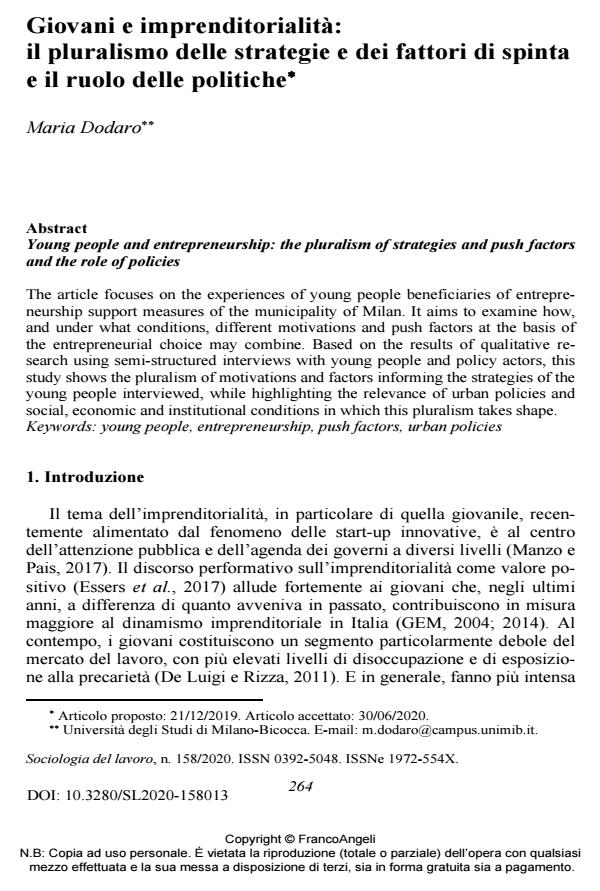Young people and entrepreneurship: the pluralism of strategies and push factors and the role of policies
Journal title SOCIOLOGIA DEL LAVORO
Author/s Maria Dodaro
Publishing Year 2020 Issue 2020/158
Language Italian Pages 20 P. 264-283 File size 268 KB
DOI 10.3280/SL2020-158013
DOI is like a bar code for intellectual property: to have more infomation
click here
Below, you can see the article first page
If you want to buy this article in PDF format, you can do it, following the instructions to buy download credits

FrancoAngeli is member of Publishers International Linking Association, Inc (PILA), a not-for-profit association which run the CrossRef service enabling links to and from online scholarly content.
The article focuses on the experiences of young people beneficiaries of entrepre-neurship support measures of the municipality of Milan. It aims to examine how, and under what conditions, different motivations and push factors at the basis of the entrepreneurial choice may combine. Based on the results of qualitative re-search using semi-structured interviews with young people and policy actors, this study shows the pluralism of motivations and factors informing the strategies of the young people interviewed, while highlighting the relevance of urban policies and social, economic and institutional conditions in which this pluralism takes shape.
Keywords: Young people, entrepreneurship, push factors, urban policies
Maria Dodaro, Giovani e imprenditorialità: il pluralismo delle strategie e dei fattori di spinta e il ruolo delle politiche in "SOCIOLOGIA DEL LAVORO " 158/2020, pp 264-283, DOI: 10.3280/SL2020-158013